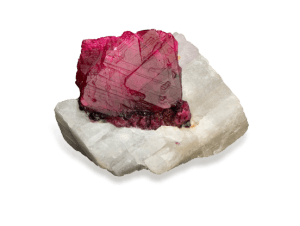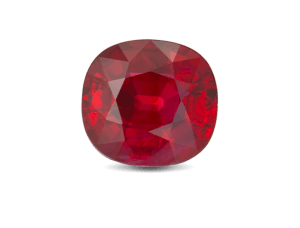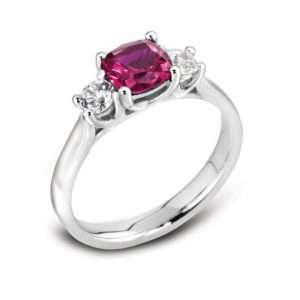RUBY: THE MOST VALUABLE VARIETY OF THE CORUNDUM MINERAL SPECIES
The Origins Of Birthstones
Birthstones appear to have a biblical source, tracing back to the book of Exodus in the Bible and specifically on the breastplate of Aaron. The breastplate was inlaid with 12 gemstones that each represented the twelve tribes of Israel at the time. This specific breastplate was adorned with the following gems: emerald, sapphire, diamond, topaz, carbuncle, sardius, agate, ligure, amethyst, onyx, jasper, and beryl.
“There were twelve stones, one for each of the names of the sons of Israel, each engraved like a seal with the name of one of the twelve tribes.” (Exodus 28:17-20)
Are birthstones gemstones or minerals?
One of the tenant building blocks of rocks are minerals, which geologists have a very precise definition for. In order to be technically a mineral, a substance must meet these five requirements. The substance must be naturally occurring (not man-made), inorganic, solid, with a definition chemical composition, and ordered internal structure.
Birthstones are gems associated with the month that a person was born.
Find your birthstone from the list below:
- January Birthstone: Garnet
- February Birthstone: Amethyst
- March Birthstone: Aquamarine
- April Birthstone: Diamond
- May Birthstone: Emerald
- June Birthstone: Pearl or Alexandrite
- July Birthstone: Ruby
- August Birthstone: Peridot
- September Birthstone: Sapphire
- October Birthstone: Tourmaline or Opal
- November Birthstone: Topaz or Citrine
- December Birthstone: Tanzanite, Zircon or Turquoise
Most of the birthstones listed above are gemstones that are technically classified as minerals. However, a pearl is not classified as a mineral since it is not inorganic as it grew inside a mollusc. In addition, opal in some instances can be either organic or inorganic and thus the organic version would not be considered a mineral.
July’s birthstone is Ruby
The name Ruby comes from Latin word ruber, which means Red. In Sanskrit, ruby is ratnaraj, meaning the king of gems.
One of the most famous locations for rubies is the Mogok Valley in Burma, known for its deep blood red colored rubies. You can also find rubies in the United States, Thailand, Vietnam, and India. Not surprising, the ruby is known to represent life and blood and is known to increase courage. In fact, warriors in Burma would implant rubies into their skin before battle for protection and courage on the battlefield.


Ruby is the most valuable variety of the corundum mineral species, which also includes sapphire. Chromium is the trace element that causes ruby’s red colour.
The most expensive ruby colour is a deep, pure, vivid red. Stones a little pinkish, purplish or orangy red are also considered rubies, but gem and jewellery professionals make careful distinction between ruby and pink, purple or orange sapphire. Closer to nowadays, many medieval Europeans wore rubies to guarantee health, wealth, wisdom and success in love. As the birthstone of July, and the world’s best-known and best-loved red gem, ruby still captivates the hearts and imagination of gem professionals and consumers alike.
Common cutting styles for ruby include mixed-cut ovals or antique cushions for transparent materials, and cabochons or beads for translucent to opaque stones.
Corundum has excellent toughness, and it’s harder than any other natural gem except diamond. This makes it ideal for rings as well as many other types of jewellery.

Care and cleaning
There are several ways to keep your ruby jewellery clean, here are some methods of caring and cleaning:
- Ultrasonic cleaning: usually safe, but never for fracture- or cavity -filled stones;
- Steam cleaning: usually safe, but never for fracture- or cavity- filled stones;
- Warm, soapy water: safe, but avoid strong detergents and vigorous scrubbing on oiled stones.
KASHKA London is offering BESPOKE wedding and engagements rings, with you favourite gemstone, made for you only!
Write us to tell us about your requirements, we’d love to make your favourite jewellery!
*sources: Wikipedia and GIA

